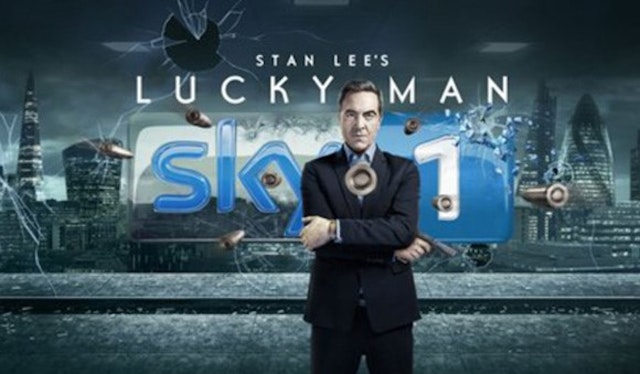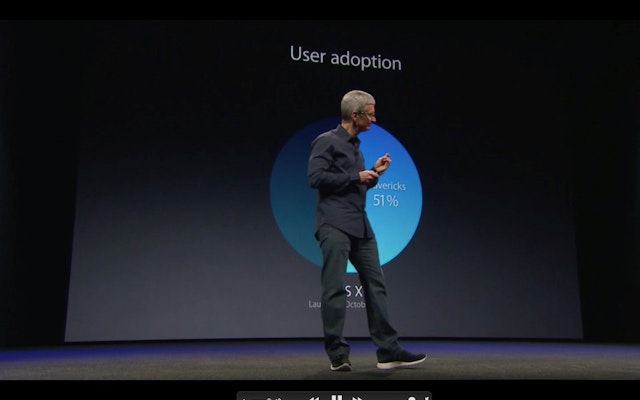How to do bad advertising well
Coke does it like a boss. Apple did it brilliantly for a decade. Dyson is up there, too. They all do bad advertising, and they make it work.

By ‘bad advertising’, I mean the kind of work that no self-respecting creative director would take to a client, and would never trouble the scorers at Cannes. A big packshot, a big logo, a headline that’s just the product name, maybe beginning, ‘Introducing the new…’. A TV spot that’s just a product demo.
If Aussie marketing guru Byron Sharp has given the world one gift, it is this: he’s explained why bad advertising isn’t a waste of money. That dirty great product shot that you see hovering over you every morning as you drive down the A3 creates powerful reinforcements that resonate when you see the cereal in a supermarket, or spot that car in a showroom. No wonder advertising planners start to twitch when Sharp’s name is mentioned in meetings. They fumble for copies of Grant McCracken’s Culturematic, the anti-Byron bible, which argues that brands accelerate their growth by hacking culture and becoming a part of it.
This can happen if you’re really, really clever and really, really lucky. The thing about hacking culture is that it can go wrong. Just ask Pepsi.
When the Kendall Jenner ad came out, a lot was written about the dangers of using in-house agencies, not least on this site. Then Ogilvy fell flat on its face with its chubby Dove bottles about a week later. Oops. What this really goes to show is that doing great, culture-hacking, Cannes-crushing work is hard, and high-risk, whether you’re in-house, a global network or a small hotshop.
Bad advertising is not hard to produce, it works fairly well and it’s very low risk. Coke’s recent global campaign features beautiful people enjoying a big cold bottle of the drink, and splats its logo over the whole shebang as big as a house. It’s pedestrian. It’s unimaginative. It clearly works. Coke has been shedding agencies recently. You don’t need them to do good bad advertising. In fact, they probably get in the way.
Agencies don’t want to do bad ads. Nobody’s career gets advanced in agencyland by a bunch of product shots and demo films. And it’s hard to justify the hourly rates of all those clever people when you show up with a campaign that’s just regurgitated the brief in a pretty way.
Agencies want to do good advertising. Creative advertising that you can show to your mates in Soho House. Stuff that gets you speaking gigs at Festivals of Creativity. The sad thing is that many agencies are pretty bad at it. For every Nike, there’s a Dove bottle clanger, and there’s 10 other attempts at clever, witty advertising that are simply met with a wall of indifference.
No wonder so many clients are now going in-house, where nobody strokes their chins and talks about creativity. Some of my favourite bad advertising has been done in-house. Gap had a great run of fantastic bad ads in the naughties; high energy product showcases that were gloriously art directed by an in-house group of fashion stylists who were free from the shackles of clever USPs or advertising planning.
More recently, Gap hired agencies. Their work started to have Big Ideas. Their market share went into freefall.

Perfect example of a great bad ad. Big logo, massive packshot, big message.
Colgate Palmolive is the master of good bad advertising. It has spent decades perfecting the creation of the best mediocre ads in the world. Brands like this are relegated in agencies to a kind of creative Siberia (‘Screw up this BMW ad, I’ll have you working on Colgate for the next six months.’) It was voted one of the brands creatives least want to work on. Its stock has risen 10% this year so far, so if it doesn't win big at this year's awards, at least the chief marketing officer can dry his eyes on his bonus cheque.
Sky, one of the UK’s biggest advertisers, simply whacks its logo on the shows it owns. It’s had to make its logo translucent so you can actually see what’s behind it, that’s how big it is. Creative? No. Engaging? No. Does it work? Here’s a list of Rupert Murdoch’s homes and yachts. Feel free to compare it with your own, or those of your network’s head. I’ll wait.

Can we make the product shot or the logo any bigger? I don’t see how.
Perhaps the daddy of bad advertising over the last decade has been Apple. Between its I’m a Mac/I’m a PC campaign and last year, Apple almost gave up trying with its advertising. Pretty much everything it did was a big product shot and a headline that said, ‘Introducing the iWhatever.’ Its most effective form of communication were live streams of the chief executive doing a slideshow.

David Ogilvy said, ‘Only in the direst cases/ever show your clients’ faces.’ The world’s most valuable brand begs to differ.
In 2016, Apple decided to get interesting again. Typically, it has done it in a new and disruptive way. Instead of trying to strip-mine a single strand of culture, it has spread its bets across several. It's done slapstick music ads with Taylor Swift, gorgeous ‘Shot on an iPhone’ billboards and TV, heartwarming ads about inclusivity and authoritative films where Jonny Ive drones on to the iPad fondlers about milling machines.
Our research has shown that this multifaceted approach is the best way to do ‘good’ advertising that actually works with the grain of digital culture, hitting several different emotional notes instead of the traditional ‘big idea’ approach. Recently, RG/A questioned the industry’s sentimental attachment to a 1960s notion of creativity, the kind that was reinforced in Cannes last month.
Perhaps it’s time to talk about a truly radical idea: abandoning the quest for the big idea altogether.
Brian Millar is co-founder of the Emotional Intelligence Agency, an internet data and strategy company that maps the emotions of consumers online. Follow him on Twitter @arthurascii
